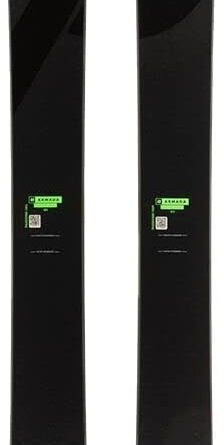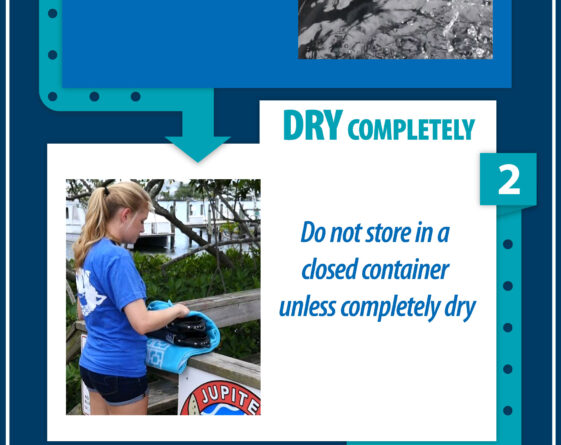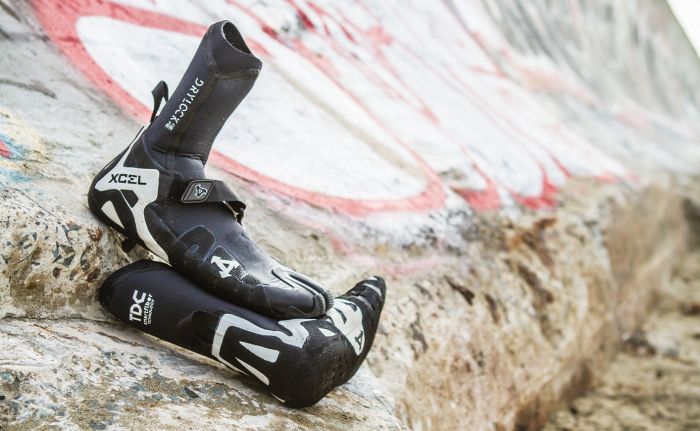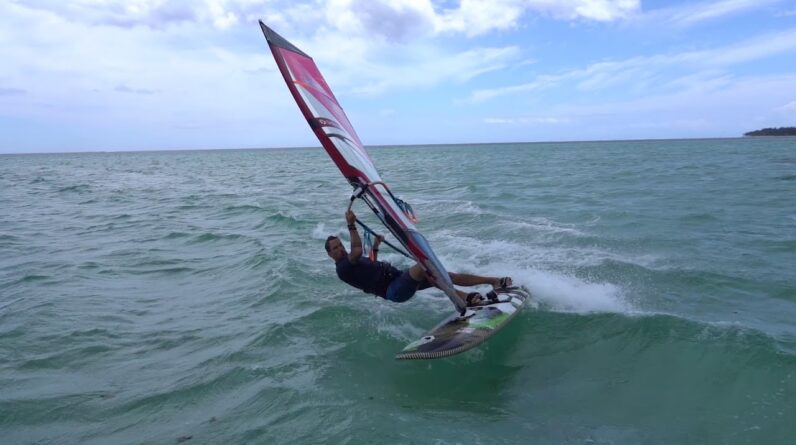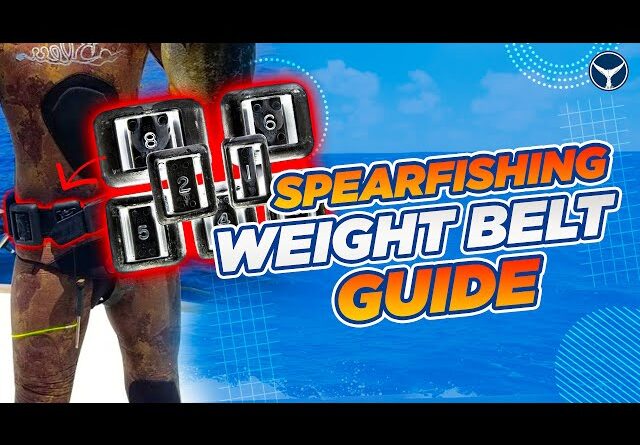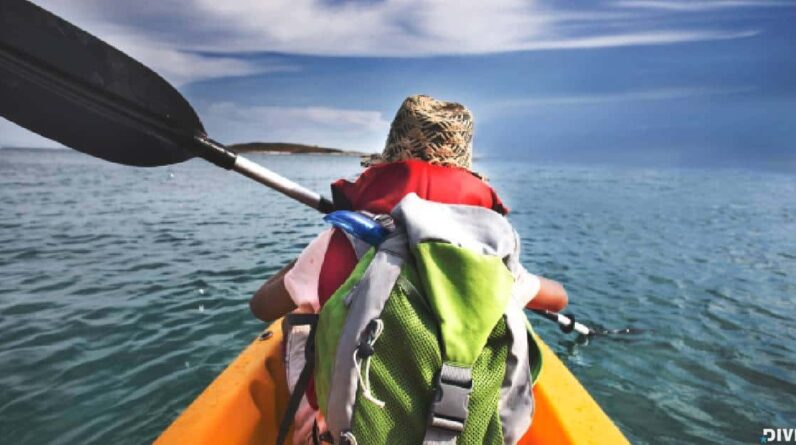
So you’ve just gotten into kayaking and you’re loving every minute of it. But now, you find yourself faced with a new challenge: choosing the perfect paddle holder for your kayak. Don’t worry, we’ve got you covered. In this article, we’ll break down everything you need to know about selecting the right type of kayak paddle holder, ensuring that your paddles are secure and within easy reach while you navigate the waters. Whether you’re a beginner or a seasoned pro, this guide will help you make the right choice and enhance your kayaking experience.
Factors to Consider
When choosing a kayak paddle holder, there are several factors that you should consider to ensure that you make the right choice for your needs. These factors include the type of kayak, the type of paddle, paddle length, paddle weight, paddle shaft material, paddle blade material, kayak dimensions, storage space, attachment options, and budget. By carefully considering each of these factors, you can find the perfect paddle holder that will securely and conveniently store your paddle while you are out on the water.
Types of Kayak Paddle Holders
There are several types of kayak paddle holders available on the market, each with its own unique features and advantages. It is important to understand the different types of paddle holders in order to choose the one that best suits your needs.
Clamp-On Paddle Holders
Clamp-on paddle holders are a popular choice for kayakers who want a versatile and easy-to-install option. These holders typically consist of a clamp that can be attached to various parts of the kayak, such as the deck or the gunwales. They provide a secure and adjustable grip for your paddle, allowing you to easily stow and retrieve it while on the water.
Flush-Mount Paddle Holders
Flush-mount paddle holders are permanently installed into the kayak, providing a sleek and streamlined storage solution. These holders are typically mounted on the deck of the kayak and feature a recessed design that prevents the paddle from protruding and interfering with your paddling stroke. Flush-mount paddle holders are ideal for kayakers who want a permanent storage option that doesn’t add any additional bulk or drag to their kayak.
Deck-Mount Paddle Holders
Deck-mount paddle holders are similar to flush-mount holders, but they are less permanent and can be easily installed and removed as needed. These holders are typically attached to the deck of the kayak using straps or adhesive, allowing for quick and convenient access to your paddle. Deck-mount paddle holders are a versatile option that can be easily moved or adjusted to accommodate different paddle lengths and kayak configurations.
Inflatable Kayak Paddle Holders
Inflatable kayak paddle holders are specifically designed for use with inflatable kayaks. These holders are typically made from durable and lightweight materials that can withstand the rigors of inflating and deflating the kayak. Inflatable paddle holders often feature a clamp or strap system that securely holds the paddle in place while you are paddling. They are a great option for kayakers who enjoy the portability and convenience of inflatable kayaks.
Modular Paddle Holders
Modular paddle holders are a versatile option that allow you to customize the storage configuration based on your specific needs. These holders typically consist of multiple components that can be attached and adjusted to accommodate different paddle lengths and types. Modular paddle holders are a great option for kayakers who want the flexibility to switch between different paddles or who may need to store other accessories, such as fishing rods or cameras, alongside their paddle.
Rod Holder Conversion Kits
Rod holder conversion kits are a unique type of paddle holder that can be used to convert existing rod holders into paddle holders. These kits typically include adapters or inserts that can be placed into the rod holder, allowing you to securely store your paddle in the same location. Rod holder conversion kits are a convenient option for kayakers who already have rod holders installed on their kayak and want to maximize their storage space.
Wall-Mounted Paddle Holders
Wall-mounted paddle holders are a practical and space-saving option for storing your paddle when you are not on the water. These holders can be easily installed on the wall of your garage, shed, or other storage area, providing a dedicated space for your paddle. Wall-mounted paddle holders are a great option for kayakers who want to keep their paddle off the ground to prevent damage and minimize clutter.
Universal Paddle Clips
Universal paddle clips are a simple and affordable option for securing your paddle to your kayak. These clips can be attached to various parts of the kayak, such as the deck, the gunwales, or the seat, providing a secure and convenient storage solution for your paddle. Universal paddle clips are a versatile option that can be used with different paddle lengths and types, making them a popular choice among kayakers.
DIY Paddle Holders
If you are a DIY enthusiast or want to save some money, you can also consider creating your own paddle holders using readily available materials. DIY paddle holders can be made from materials such as PVC pipe, bungee cords, or even repurposed household items. While they may require a bit more effort and creativity to construct, DIY paddle holders can be a fun and cost-effective way to customize your kayak storage solution.
Tether Paddle Holders
Tether paddle holders are specifically designed to prevent you from losing your paddle in the water. These holders typically consist of a retractable tether or leash that is attached to the paddle and the kayak. Tether paddle holders are an essential safety accessory for kayakers who frequently paddle in rough or windy conditions, as they provide added security and peace of mind.
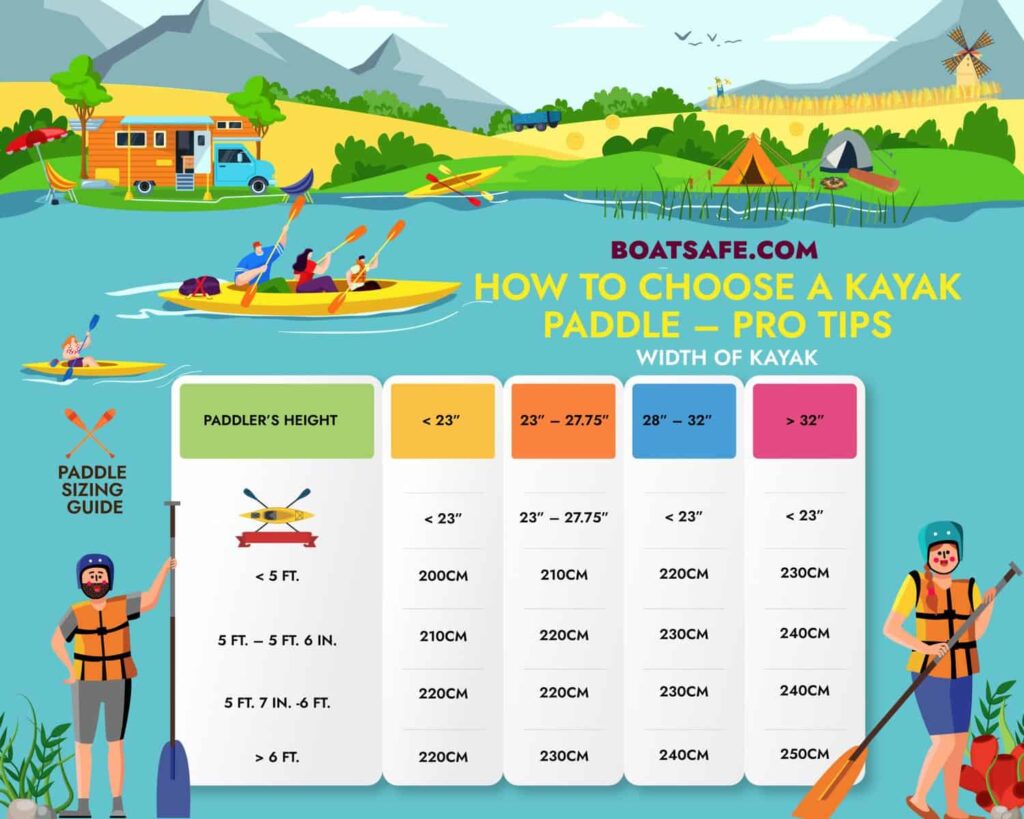
This image is property of www.boatsafe.com.
Type of Kayak
The type of kayak you have will greatly influence the type of paddle holder that will work best for you. There are different types of kayaks available, each designed for specific purposes and paddling conditions. Understanding the characteristics of different kayak types can help you choose the right paddle holder that complements your kayak and enhances your overall paddling experience.
Sit-On-Top Kayaks
Sit-on-top kayaks are popular for their stability, ease of use, and versatility. As the name suggests, sit-on-top kayaks feature an open cockpit design, allowing you to sit on top of the kayak. These kayaks are ideal for recreational paddling, fishing, and even surfing. When choosing a paddle holder for a sit-on-top kayak, consider a clamp-on or flush-mount option that can be easily installed on the deck or gunwales.
Sit-Inside Kayaks
Sit-inside kayaks, also known as traditional or recreational kayaks, feature an enclosed cockpit where the paddler sits inside the kayak. These kayaks offer a drier and more protected paddling experience, making them a popular choice for touring and recreational use. Deck-mount or flush-mount paddle holders are commonly used with sit-inside kayaks, as they provide a secure and streamlined storage solution without interfering with the paddler’s movements.
Inflatable Kayaks
Inflatable kayaks offer the convenience of portability and easy storage. These kayaks are made from durable and puncture-resistant materials that can be inflated and deflated as needed. Inflatable kayaks are perfect for recreational paddling and casual use. When choosing a paddle holder for an inflatable kayak, look for options specifically designed for inflatable kayaks, as they will have features that accommodate the unique needs of these kayaks.
Fishing Kayaks
Fishing kayaks are specially designed to accommodate fishing gear and provide stability while casting and reeling in fish. These kayaks often have additional features, such as rod holders, storage compartments, and adjustable seating positions. When choosing a paddle holder for a fishing kayak, consider modular or rod holder conversion kit options that allow you to store your paddle and other fishing accessories conveniently.
Touring Kayaks
Touring kayaks are designed for long-distance paddling and expeditions. These kayaks are typically longer and narrower than recreational kayaks, allowing for faster and more efficient paddling. Touring kayaks often have ample storage space and built-in deck rigging for securing gear. When choosing a paddle holder for a touring kayak, consider flush-mount or deck-mount options that provide a secure and low-profile storage solution.
Recreational Kayaks
Recreational kayaks are versatile and beginner-friendly kayaks that are suitable for various paddling conditions. These kayaks are typically wider and more stable than other types of kayaks, making them ideal for casual paddling, day trips, and calm water conditions. When choosing a paddle holder for a recreational kayak, consider clamp-on or deck-mount options that can be easily adjusted and provide a secure grip for your paddle.
White Water Kayaks
White water kayaks are designed for navigating fast-moving rivers and rapids. These kayaks are typically shorter and have a more aggressive hull design to enhance maneuverability and control. When choosing a paddle holder for a white water kayak, consider a high-strength option that can withstand the rigors of white water paddling and provide a secure hold for your paddle.
Sea Kayaks
Sea kayaks, also known as touring or expedition kayaks, are designed for paddling in open water and coastal environments. These kayaks are typically longer and have a more streamlined design to optimize speed and efficiency. Sea kayaks often have additional features, such as multiple storage compartments and bulkheads for enhanced safety. When choosing a paddle holder for a sea kayak, consider flush-mount or deck-mount options that provide a secure storage solution without interfering with the paddler’s movements.
Surf Skis
Surf skis are high-performance kayaks designed for surfing ocean swells and riding waves. These kayaks are typically long, narrow, and feature a rudder or skeg for enhanced control. When choosing a paddle holder for a surf ski, consider a low-profile option that securely holds your paddle and does not interfere with your paddling stroke.
Stand-Up Paddle Boards (SUPs)
Stand-up paddle boards, or SUPs, are a popular alternative to traditional kayaking. These boards are typically larger and wider than kayaks, allowing the paddler to stand upright while paddling with a single-bladed paddle. SUPs often have integrated bungee cords or straps for attaching the paddle when not in use. When choosing a paddle holder for an SUP, consider options specifically designed for SUPs, such as leash attachment points or paddle storage slots.
Type of Paddle
The type of paddle you use plays a crucial role in determining the type of paddle holder that will work best for you. There are various types of kayak paddles available, each designed with different materials, configurations, and purposes. Understanding the characteristics of different paddle types can help you choose the right paddle holder that can securely accommodate your paddle.
One-Piece Paddles
One-piece paddles are a common and straightforward option for kayakers. These paddles consist of a single piece of shaft material that is connected to a blade at one end. One-piece paddles are typically more durable and provide better power transfer compared to paddles with a break-apart design. When choosing a paddle holder for a one-piece paddle, consider a holder with adjustable straps or clamps that can accommodate the length and diameter of the shaft.
Two-Piece Paddles
Two-piece paddles feature a break-apart design that allows for easy storage and transportation. These paddles typically consist of two separate shaft pieces that can be connected together using a ferrule system. Two-piece paddles are popular among kayakers who want the flexibility to adjust the paddle length or who need a more compact option for traveling. When choosing a paddle holder for a two-piece paddle, consider a holder that can securely hold both shaft pieces when they are connected or separate.
Four-Piece Paddles
Four-piece paddles are a variation of the two-piece design that adds an additional break in the paddle shaft. These paddles are designed for maximum compactness and portability. Four-piece paddles are commonly used by kayakers who frequently travel or have limited storage space. When choosing a paddle holder for a four-piece paddle, consider a holder that can securely hold each individual shaft piece and the blade.
Break-Apart Paddles
Break-apart paddles are similar to two-piece paddles but have more than two detachable sections. These paddles can be disassembled into multiple pieces, making them highly portable and storage-friendly. Break-apart paddles are a great option for kayakers who want the convenience of a compact paddle without compromising on quality or performance. When choosing a paddle holder for a break-apart paddle, consider a holder with multiple attachment points or compartments to securely store each segment of the paddle.
Feathered Paddles
Feathered paddles have an offset blade design that improves efficiency and reduces wind resistance. Feathering refers to the angle at which the blades are set relative to each other. This angle can be adjusted to accommodate different paddling styles, wind conditions, or personal preferences. When choosing a paddle holder for a feathered paddle, consider a holder that can securely hold the paddle in a feathered or unfeathered position.
Unfeathered Paddles
Unfeathered paddles have blades that are aligned in a parallel position. These paddles are commonly used by paddlers who prefer a more symmetrical stroke or who are new to kayaking. When choosing a paddle holder for an unfeathered paddle, consider a holder that can securely hold the paddle in a horizontal or vertical position.
Adjustable Length Paddles
Adjustable length paddles are a versatile option that allows you to modify the paddle length based on your needs or paddling conditions. These paddles typically feature an adjustable ferrule system that can extend or shorten the paddle shaft. Adjustable length paddles are commonly used by kayakers who paddle in a variety of water conditions or who share a kayak with different-sized paddlers. When choosing a paddle holder for an adjustable length paddle, consider a holder that can accommodate the range of paddle lengths that you may use.
Fixed Length Paddles
Fixed length paddles have a non-adjustable shaft length, and are typically customized to fit the individual kayaker’s height. These paddles are preferred by paddlers who have a specific preferred paddle length or who prioritize lightweight options. When choosing a paddle holder for a fixed length paddle, consider a holder with adjustable straps or clamps that can accommodate the diameter of the shaft.
Recreational Paddles
Recreational paddles are designed for casual and recreational paddling in calm or moderate water conditions. These paddles are typically more affordable and durable, making them suitable for beginner kayakers or those on a budget. When choosing a paddle holder for a recreational paddle, consider a holder that can securely hold the paddle without damaging the shaft or blade material.
Performance Paddles
Performance paddles are engineered for experienced and skilled kayakers who want optimal power, efficiency, and control. These paddles are typically lighter and have more advanced blade shapes and materials, such as carbon fiber or fiberglass. When choosing a paddle holder for a performance paddle, consider a holder that can securely support the paddle weight and accommodate the specific dimensions and shape of the blade.
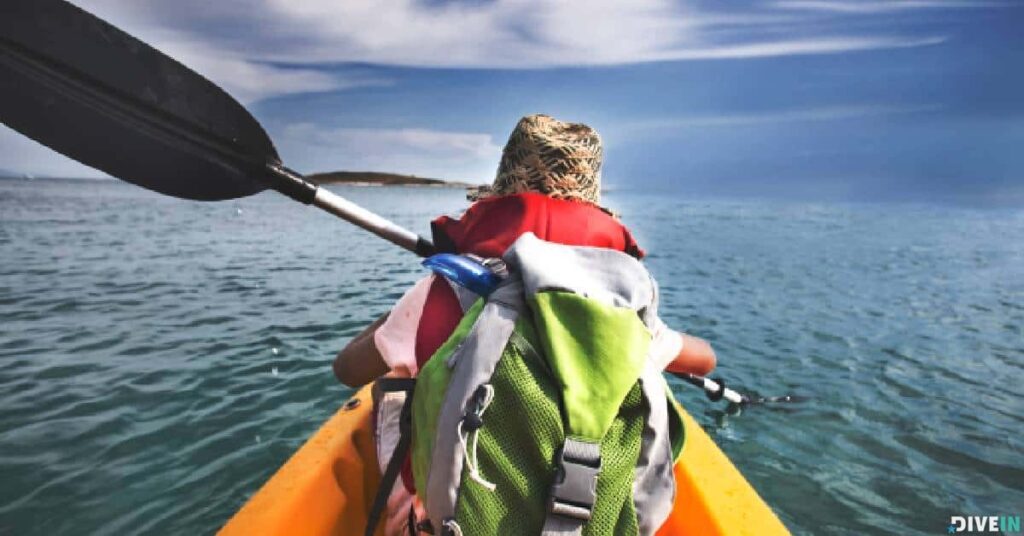
This image is property of cdn.divein.com.
Paddle Length
The length of your paddle is an important consideration when choosing a paddle holder. The paddle length can greatly impact your paddling efficiency, comfort, and maneuverability on the water. It is important to choose a paddle holder that can securely and conveniently store your paddle based on its length and your paddling style.
Low-Angle Paddling
Low-angle paddling is a relaxed paddling style commonly used for recreational and touring kayaking. This technique emphasizes longer, more horizontal strokes, and is ideal for efficient cruising and conserving energy. When choosing a paddle holder for low-angle paddling, consider a holder that can accommodate a longer paddle length to maximize your reach and paddling efficiency.
High-Angle Paddling
High-angle paddling is a more aggressive paddling style commonly used for whitewater kayaking, surfing, or when paddling with a high cadence. This technique involves shorter and more vertical strokes, and provides better control and maneuverability in rough water conditions. When choosing a paddle holder for high-angle paddling, consider a holder that can securely store a slightly shorter paddle length to optimize your stroke power and control.
Recreational Paddling
Recreational paddling typically involves casual and relaxed kayaking in calm or slow-moving water. The paddle length for recreational paddling depends on your height, kayak width, and personal preference. When choosing a paddle holder for recreational paddling, consider a holder that can accommodate a paddle length that allows for comfortable and efficient strokes without hitting the kayak or the water’s surface.
Touring Paddling
Touring paddling involves longer and more sustained paddling trips in various water conditions. The paddle length for touring paddling depends on your height, kayak width, and the desired paddle stroke technique or efficiency. When choosing a paddle holder for touring paddling, consider a holder that can accommodate a paddle length that enables you to maintain a comfortable and efficient paddling rhythm for a longer duration.
White Water Paddling
White water paddling requires a shorter paddle length to allow for quick and powerful strokes in turbulent water conditions. The paddle length for white water paddling also depends on your height, kayak width, and personal preference. When choosing a paddle holder for white water paddling, consider a holder that can securely store a paddle length that provides optimal control, maneuverability, and power in challenging and dynamic water environments.
Stand-Up Paddling
Stand-up paddling, or SUP, requires a longer paddle length compared to traditional kayak paddling. The paddle length for stand-up paddling depends on your height, the type of SUP board, and the paddling technique (e.g., cruising or wave riding). When choosing a paddle holder for stand-up paddling, consider a holder that can accommodate a longer paddle length to support your upright standing position and paddle stroke technique.
Kayak Width
The width of your kayak can also influence the optimal paddle length and the type of holder you should choose. Wider kayaks generally require longer paddles to effectively reach the water’s surface and minimize strain on your arms and shoulders. When considering a paddle holder for a wide kayak, choose a holder that can securely accommodate a longer paddle length without interfering with your paddling motion or the kayak’s surface.
Kayaker’s Height
The height of the kayaker is a key factor in determining the appropriate paddle length. Taller paddlers typically require longer paddles to compensate for their reach, while shorter paddlers may need shorter paddles to prevent excess strain or discomfort. When choosing a paddle holder, consider a holder that can accommodate a paddle length suitable for your height to ensure proper paddling ergonomics and efficiency.
Personal Preference
Personal preferences and paddling style can also influence the paddle length that feels most comfortable and effective for you. Some kayakers may prefer longer paddles for increased leverage and power, while others may prefer shorter paddles for quicker, more agile strokes. When choosing a paddle holder, consider a holder that can accommodate the paddle length that aligns with your personal preferences and paddling style.
Manufacturer’s Recommendations
It is worth noting that some paddle manufacturers provide recommended paddle lengths based on different factors, such as kayaker height, kayak width, and paddling technique. These recommendations can serve as a helpful guideline when choosing a paddle length and a compatible paddle holder. Always refer to the manufacturer’s recommendations to ensure you choose a paddle holder that is suitable for your specific paddle length.
Paddle Weight
The weight of your paddle is an important consideration when choosing a paddle holder. The paddle weight directly affects the type of holder you need, as heavier paddles may require stronger attachment options or additional support to ensure proper storage and prevent damage.
Lightweight Paddles
Lightweight paddles are typically made from materials such as carbon fiber or fiberglass, resulting in reduced overall weight. These paddles are ideal for paddlers who prioritize weight savings and increased paddle efficiency. When choosing a paddle holder for a lightweight paddle, consider a holder that can securely hold the paddle weight without adding unnecessary bulk or strain to the kayak.
Standard Weight Paddles
Standard weight paddles are commonly made from materials such as aluminum or plastic, resulting in a moderate overall weight. These paddles are widely available and offer a good balance between durability and affordability. When choosing a paddle holder for a standard weight paddle, consider a holder that can securely hold the paddle weight and maintain stability in various paddling conditions.
Heavyweight Paddles
Heavyweight paddles are typically made from materials such as wood or composite blends, resulting in increased overall weight. These paddles are preferred by paddlers who prioritize durability, strength, and aesthetics. When choosing a paddle holder for a heavyweight paddle, consider a holder that can securely hold the paddle weight and provide additional support to prevent excessive movement or strain on the attachment points.
Fiberglass Paddles
Fiberglass paddles are lightweight and offer a good balance between performance, durability, and cost. These paddles are commonly used by recreational and touring kayakers who want a paddle that is dependable and efficient. When choosing a paddle holder for a fiberglass paddle, consider a holder that can securely hold the paddle weight and protect the delicate fiberglass material from potential damage.
Carbon Fiber Paddles
Carbon fiber paddles are the lightest and most high-performance option available. These paddles are favored by experienced and competitive paddlers who prioritize power, efficiency, and speed. When choosing a paddle holder for a carbon fiber paddle, consider a holder that can securely hold the paddle weight and provide extra care to protect the delicate carbon fiber material from scratches or impact.
Aluminum Paddles
Aluminum paddles are durable and affordable, making them a popular choice among beginners and recreational paddlers. These paddles are slightly heavier than their carbon fiber or fiberglass counterparts but provide good strength and reliability. When choosing a paddle holder for an aluminum paddle, consider a holder that can securely hold the paddle weight and provide reliable support to prevent any bending or distortion of the shaft.
Wooden Paddles
Wooden paddles are known for their aesthetic appeal and craftsmanship. These paddles are typically heavier than other materials but offer a unique feel and natural beauty. When choosing a paddle holder for a wooden paddle, consider a holder that can securely hold the paddle weight and provide additional padding or protection to prevent any scratches or damage to the paddle’s wooden surface.
Plastic Paddles
Plastic paddles are durable and affordable, making them a common choice for beginners and rental kayaks. These paddles are easy to clean and maintain, but they may be heavier compared to other materials. When choosing a paddle holder for a plastic paddle, consider a holder that can securely hold the paddle weight and provide reliable support to prevent any breakage or deformation.
Composite Paddles
Composite paddles are typically made from a combination of different materials, such as fiberglass, carbon fiber, or Kevlar. These paddles offer a good balance of weight, performance, and durability. When choosing a paddle holder for a composite paddle, consider a holder that can accommodate the paddle weight and design without compromising on stability or overall performance.
Fiberglass Reinforced Plastic (FRP) Paddles
Fiberglass reinforced plastic (FRP) paddles are lightweight and provide good strength and durability. These paddles are a popular choice among recreational and touring paddlers who want a reliable and affordable option. When choosing a paddle holder for an FRP paddle, consider a holder that can securely hold the paddle weight and provide reliable support to prevent any bending or deformation of the shaft.
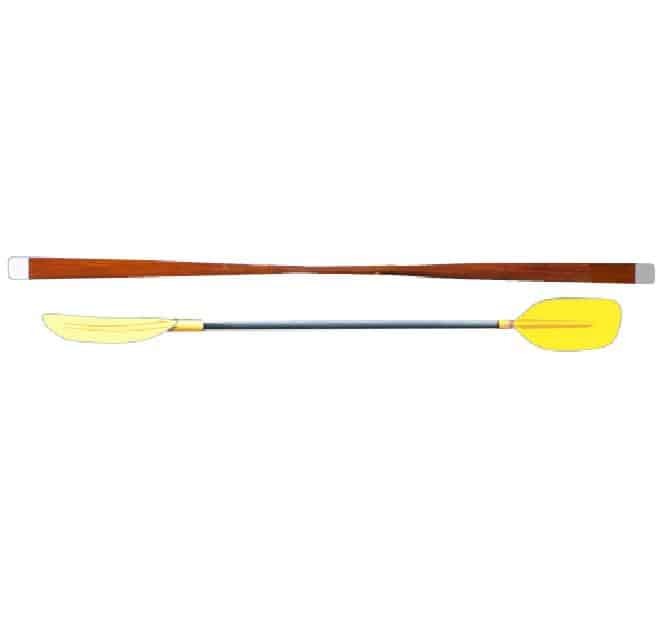
This image is property of cdn.divein.com.
Paddle Shaft Material
The material used for the paddle shaft can greatly impact the feel, flexibility, and durability of the paddle. Choosing the right material for your shaft is essential to ensure a comfortable and efficient paddling experience.
Aluminum Shafts
Aluminum shafts are a common choice for recreational paddles due to their durability and affordable price. These shafts are relatively rigid, providing good power transfer and support. When choosing a paddle holder for an aluminum shaft, consider a holder that can securely hold the shaft without causing any scratches or dents to the metal surface.
Fiberglass Shafts
Fiberglass shafts are lightweight and offer a good balance between flexibility and strength. These shafts provide excellent energy transfer and a comfortable feel. When choosing a paddle holder for a fiberglass shaft, consider a holder that can securely hold the shaft and provide cushioning or protection to prevent any damage to the delicate fiberglass material.
Carbon Fiber Shafts
Carbon fiber shafts are the lightest and most high-performance option available. These shafts provide increased stiffness and enhanced power transmission, resulting in maximum efficiency and paddling performance. When choosing a paddle holder for a carbon fiber shaft, consider a holder that can securely hold the shaft and provide additional support to prevent any warping or deformation.
Plastic Shafts
Plastic shafts are commonly found in entry-level paddles and rental equipment. These shafts offer good durability and resistance to impact. When choosing a paddle holder for a plastic shaft, consider a holder that can securely hold the shaft without causing any damage or deformation to the plastic material.
Wooden Shafts
Wooden shafts are often preferred for their aesthetic appeal and traditional look. These shafts offer a natural grip and a unique feel. When choosing a paddle holder for a wooden shaft, consider a holder that can securely hold the shaft and provide additional padding or protection to prevent any scratches or damage to the wooden surface.
Shaft Diameter
The diameter of the paddle shaft is an important consideration for choosing a paddle holder. The shaft diameter plays a role in the overall strength, comfort, and stability of the paddle. When choosing a paddle holder, consider a holder that can accommodate the diameter of your paddle shaft without causing any slipping, wobbling, or looseness, as this can affect your paddling performance and control.
Shaft Grip
The grip or texture of the paddle shaft can greatly impact your comfort and control while paddling. Some shafts have a smooth finish, while others have a textured or contoured grip for better hold and reduced fatigue. When choosing a paddle holder, consider a holder that can securely hold the paddle while preserving the texture or grip of the shaft to ensure optimal paddling comfort and control.
Paddle Blade Material
The material used for the paddle blade determines its durability, buoyancy, and overall performance in the water. Consider the different paddle blade materials to choose a paddle holder that can securely store your paddle without causing any damage or deformation to the blade.
Plastic Blades
Plastic blades are commonly found in entry-level recreational paddles due to their affordability and durability. These blades offer good resistance to impact and are less prone to scratches or chipping. When choosing a paddle holder for plastic blades, consider a holder that can securely hold the blade without causing any warping or deformation.
Fiberglass Blades
Fiberglass blades are lightweight and provide good strength and durability. These blades offer excellent flutter resistance and a smooth entry into the water. When choosing a paddle holder for fiberglass blades, consider a holder that can securely hold the blade and provide cushioning or protection to prevent any damage to the delicate fiberglass material.
Carbon Fiber Blades
Carbon fiber blades are the lightest and most high-performance option available. These blades provide optimal power transfer, increased stiffness, and reduced weight. Carbon fiber blades are favored by experienced paddlers who desire maximum efficiency and performance. When choosing a paddle holder for carbon fiber blades, consider a holder that can securely hold the blade and provide additional support to prevent any chips, scratches, or cracks on the delicate carbon fiber material.
Wooden Blades
Wooden blades are known for their aesthetic appeal and craftsmanship. These blades offer a unique look, buoyancy, and a natural feel in the water. When choosing a paddle holder for wooden blades, consider a holder that can securely hold the blade and provide additional padding or protection to prevent any scratches or damage to the wooden surface.
Blade Size
The size of the paddle blade affects the power, efficiency, and maneuverability of your strokes. Larger blades generate more power but require more effort, while smaller blades are easier to control and are suitable for paddlers with less physical strength. When choosing a paddle holder, consider a holder that can securely accommodate your blade size without causing any deformation or instability.
Blade Shape
The shape of the paddle blade greatly influences its purpose and performance. Different blade shapes excel in various paddling conditions, such as flat water, surfing, or white water. When choosing a paddle holder, consider a holder that can securely hold the blade shape and maintain its integrity without altering its performance characteristics.
Blade Angle
The angle of the paddle blade, also known as the blade feather, refers to the offset between the blade faces. Feathering can enhance paddling efficiency by reducing wind resistance during the recovery phase of the stroke. Some paddles have adjustable blade angles, while others have a fixed angle. When choosing a paddle holder, consider a holder that can securely hold the blade angle you prefer without causing any unwanted changes or adjustments.
Surface Area
The surface area of the paddle blade determines the amount of water it displaces and the power it generates. Larger surface areas generate more power but require more effort, while smaller surface areas are easier to control and are suitable for paddlers with less physical strength. When choosing a paddle holder, consider a holder that can securely accommodate your blade’s surface area without interfering with your paddling stroke or the kayak’s surface.
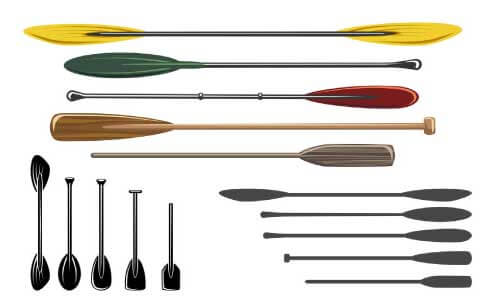
This image is property of whitewatercoach.com.
Kayak Dimensions
The dimensions of your kayak play a crucial role in determining the appropriate paddle holder that will fit and function well with your specific kayak model. Understanding the different kayak dimensions and their implications can help you choose a paddle holder that provides a secure and convenient storage solution.
Width
The width of your kayak directly affects the placement and design of the paddle holder. Wider kayaks typically require longer paddles and may need additional support to prevent the paddle from hitting the kayak’s surface or interfering with your paddling stroke. When choosing a paddle holder for a wide kayak, consider a holder with adjustable straps or clamps that can accommodate the width of your kayak and provide a secure hold for your paddle.
Length
The length of your kayak can influence the placement and number of paddle holders you might need. Longer kayaks often have more storage space and additional attachment options, allowing for multiple paddle holders. When choosing a paddle holder for a long kayak, consider a holder that maximizes the available storage space and maintains a balanced weight distribution throughout the kayak.
Hull Design
The hull design of your kayak affects the placement and type of paddle holder that is feasible. Kayaks with flat or rounded hulls provide more surface area for attachment options, while kayaks with pronounced keels or ridges may limit the placement or style of paddle holders. When choosing a paddle holder, consider the hull design of your kayak and select a holder that can be securely attached and provide a stable grip for your paddle.
Deck Style
The deck style of your kayak influences the placement and function of the paddle holder. Kayaks with open decks offer more attachment options and flexibility, while kayaks with closed or molded decks may have specific areas or cutouts designated for paddle holders. When choosing a paddle holder, consider the deck style of your kayak and select a holder that can be easily installed or integrated into your kayak’s deck design.
Cockpit Size
The size and shape of your kayak’s cockpit can affect the placement and accessibility of the paddle holder. Larger cockpits provide more space for paddle storage or attachment, while smaller cockpits may require a more compact or streamlined holder. When choosing a paddle holder, consider the size and configuration of your kayak’s cockpit and select a holder that allows for easy access to your paddle without obstructing your entry or exit.
Weight Capacity
The weight capacity of your kayak determines its load-bearing capacity and the overall amount of gear and equipment you can carry. When choosing a paddle holder, consider the weight capacity of your kayak and select a holder that can securely support the weight of your paddle without compromising the kayak’s stability or performance.
Number of Seating Positions
Some kayaks have multiple seating positions or adjustable seating systems that allow for various paddling configurations. When choosing a paddle holder, consider the number of seating positions in your kayak and select a holder that offers convenient access to your paddle from each seating location.
Rigging Options
Some kayaks have built-in rigging options, such as bungee cords, D-rings, or gear tracks, that can be used for attaching accessories, including paddle holders. When choosing a paddle holder, consider the rigging options available in your kayak and select a holder that integrates smoothly with the existing rigging system or allows for easy installation in the available attachment points.
Built-In Accessories
Some kayaks come equipped with built-in paddle holders or designated storage areas that are specifically designed for securing and storing paddles. These built-in accessories offer a convenient and customized storage solution. When choosing a paddle holder, consider any built-in paddle storage options that are already available in your kayak and determine if additional paddle holders are necessary based on your storage needs and preference.
Additional Storage
The available storage space in your kayak can impact the number and placement of paddle holders you can install. For kayaks with limited storage capacity, consider selecting a paddle holder that maximizes space efficiency and allows for other gear or accessories to be stored alongside the paddle. For kayaks with ample storage capacity, you may have the flexibility to install multiple paddle holders to accommodate different types of paddles or accessories.
Attachment Options
The attachment options for your paddle holder are important considerations to ensure a secure and reliable storage solution. The attachment options can vary depending on the type of holder and the specific kayak model.
Clamp-On Attachments
Clamp-on attachments are a versatile and popular option for paddle holders. These attachments usually consist of adjustable clamps that can be securely fastened to various parts of the kayak, such as the deck, gunwales, or seat back. When choosing a clamp-on paddle holder, consider the shape and thickness of the attachment point and select a holder with adjustable clamps that can accommodate your specific kayak configuration.
Screw-In Attachments
Screw-in attachments are a more permanent option for securing paddle holders to your kayak. These attachments typically require drilling or screwing into the kayak’s deck, gunwales, or other designated attachment points. When choosing a screw-in paddle holder, consider the material and thickness of the kayak’s hull and select an attachment that provides a secure and watertight seal without compromising the kayak’s structural integrity.
Adhesive Attachments
Adhesive attachments, such as heavy-duty tapes or glues, offer a non-intrusive option for securing paddle holders to your kayak. These attachments provide a strong bond that can withstand the rigors of paddling and exposure to water. When choosing an adhesive paddle holder, consider the material and surface condition of your kayak and select an attachment option that is specifically designed for the type of kayak and paddle holder you have.
Strap Attachments
Strap attachments offer a flexible and adjustable option for paddle holders that can be used on various types of kayaks. These attachments usually consist of adjustable straps or webbing that can be securely fastened around the kayak’s deck, gunwales, or seat back. When choosing a strap paddle holder, consider the width and adjustability of the straps and select a holder that can easily accommodate your specific kayak dimensions and attachment points.
Track Mount Systems
Track mount systems are commonly found in kayaks with integrated gear tracks or slide rails. These systems allow for easy installation and adjustment of various accessories, including paddle holders. When choosing a track mount paddle holder, consider the compatibility of the holder with the specific track mount system in your kayak and select a holder that offers secure and convenient attachment without interfering with other gear or accessories.
Railblaza
Railblaza is a popular brand that offers a range of kayak accessories, including paddle holders. Railblaza paddle holders often feature a unique StarPort mounting system that allows for quick and secure attachment to various parts of the kayak. When choosing a Railblaza paddle holder, consider the compatibility of the StarPort system with your specific kayak model and select a holder that meets your storage needs and preferences.
YakAttack
YakAttack is another well-known brand that specializes in kayak accessories, including paddle holders. YakAttack paddle holders are designed with versatility and durability in mind. They often feature a GearTrac mounting system that allows for easy installation and adjustment on compatible kayaks. When choosing a YakAttack paddle holder, consider the compatibility of the GearTrac system with your specific kayak model and select a holder that provides reliable storage and accessibility for your paddle.
Gear Tracks
Gear tracks are integrated systems found in many modern kayaks that allow for easy installation and adjustment of various accessories, including paddle holders. These tracks typically consist of a recessed channel with multiple attachment points for versatile and secure mounting options. When choosing a paddle holder for a kayak with gear tracks, consider the width and style of the tracks and select a holder that can be easily installed, adjusted, and securely attached to the specific track configuration.
Compatibility
When choosing a paddle holder, it is important to consider the compatibility of the holder with your specific kayak model. Some paddle holders are designed to be universally compatible with various kayak types and attachment options, while others are specifically designed for certain kayak brands, models, or accessory systems. Always refer to the manufacturer’s recommendations for compatibility and select a paddle holder that is specifically designed to fit and function well with your kayak.
Security
The security of your paddle holder is crucial to ensure that your paddle remains securely fastened while you are on the water. Look for paddle holders that offer secure attachment options, such as adjustable clamps, screw-in mounts, or strong adhesive bonds. Additionally, consider holders with features like quick-release mechanisms or built-in locks that provide added security and peace of mind.

This image is property of static.wixstatic.com.
Budget
Your budget is an important factor to consider when choosing a paddle holder. Paddle holders vary in price depending on their type, material, brand, and features. Determine your budget and prioritize the features that are most important to you, such as durability, convenience, or customization options. While it may be tempting to choose the most affordable option, it is important to balance cost with quality and functionality to ensure a reliable and long-lasting paddle holder.
In conclusion, choosing the right type of kayak paddle holder involves considering factors such as the type of kayak, type of paddle, paddle length, paddle weight, paddle shaft material, paddle blade material, kayak dimensions, storage space, attachment options, and budget. By taking the time to evaluate these factors and understand their implications, you can make an informed decision that will provide a secure and convenient paddle storage solution for your kayaking adventures. Whether you prefer clamp-on holders, flush-mount holders, or any other type of paddle holder, selecting the right one is essential to ensure that your paddle remains secure while you enjoy your time on the water.


